Do you have a question about the Dremel MM50 and is the answer not in the manual?
Essential safety and operational guidance before initial use of the tool.
Explanation of safety alert symbols like DANGER, WARNING, and CAUTION.
Guidelines for maintaining a safe and organized work environment.
Precautions to prevent electrical shock hazards when using the tool.
Recommendations for user alertness, common sense, and avoiding fatigue.
Proper grip, footing, and balance for safe operation of oscillating tools.
Methods for stabilizing the workpiece for secure and controlled operation.
Precautions when handling sharp accessories and during vibration exposure.
Safety measures when working with materials containing potential carcinogens.
Explanation of symbols for voltage, current, speed, and power.
Overview of the tool's design, ergonomic features, and intended applications.
Diagram and identification of key parts like clamping knob, switch, and speed dial.
Step-by-step guide for attaching and securing accessories using the Easy-Lock mechanism.
Guidance on feeling the tool's balance, grip, and control for optimal use.
Instructions for turning the tool on and off using the slide switch.
Explanation of how to adjust the tool's speed using the control dial.
Information on the tool's oscillation speed range and its effect on performance.
Chart detailing accessory use and recommended speed settings for various materials.
Techniques and tips for precise flush cuts with specific blades.
Using the tool for tasks like removing old tile adhesives and caulk.
Using the tool for preparing surfaces before new flooring or tiles.
Performing detailed sanding in tight or hard-to-reach areas.
Making precise cuts in tight areas, close to edges, or flush to surfaces.
Using specific blades to remove damaged or cracked grout lines.
Using scrapers for removing varnish, adhesives, and carpeting.
Dry sanding wood, metal, surfaces, corners, and edges.
Using diamond paper or carbide rasp for grinding cement, plaster, or wood.
Guide to choosing the correct grit size for sanding and grinding tasks.
Information on authorized service and the importance of using genuine parts.
Recommendations for servicing motor brushes to maintain tool efficiency.
Safe methods for cleaning the tool and precautions regarding cleaning agents.
Recommendations for selecting the correct gauge and type of extension cords.
Essential safety and operational guidance before initial use of the tool.
Explanation of safety alert symbols like DANGER, WARNING, and CAUTION.
Guidelines for maintaining a safe and organized work environment.
Precautions to prevent electrical shock hazards when using the tool.
Recommendations for user alertness, common sense, and avoiding fatigue.
Proper grip, footing, and balance for safe operation of oscillating tools.
Methods for stabilizing the workpiece for secure and controlled operation.
Precautions when handling sharp accessories and during vibration exposure.
Safety measures when working with materials containing potential carcinogens.
Explanation of symbols for voltage, current, speed, and power.
Overview of the tool's design, ergonomic features, and intended applications.
Diagram and identification of key parts like clamping knob, switch, and speed dial.
Step-by-step guide for attaching and securing accessories using the Easy-Lock mechanism.
Guidance on feeling the tool's balance, grip, and control for optimal use.
Instructions for turning the tool on and off using the slide switch.
Explanation of how to adjust the tool's speed using the control dial.
Information on the tool's oscillation speed range and its effect on performance.
Chart detailing accessory use and recommended speed settings for various materials.
Techniques and tips for precise flush cuts with specific blades.
Using the tool for tasks like removing old tile adhesives and caulk.
Using the tool for preparing surfaces before new flooring or tiles.
Performing detailed sanding in tight or hard-to-reach areas.
Making precise cuts in tight areas, close to edges, or flush to surfaces.
Using specific blades to remove damaged or cracked grout lines.
Using scrapers for removing varnish, adhesives, and carpeting.
Dry sanding wood, metal, surfaces, corners, and edges.
Using diamond paper or carbide rasp for grinding cement, plaster, or wood.
Guide to choosing the correct grit size for sanding and grinding tasks.
Information on authorized service and the importance of using genuine parts.
Recommendations for servicing motor brushes to maintain tool efficiency.
Safe methods for cleaning the tool and precautions regarding cleaning agents.
Recommendations for selecting the correct gauge and type of extension cords.
| Tool-Less Accessory Change | Yes |
|---|---|
| Variable Speed | Yes |
| Power Source | Corded |
| Angle of Oscillation | 3.2 degrees |
| Quick Release Accessory Change | Yes |
| Voltage | 120V |
| Cord Length | 7 ft |
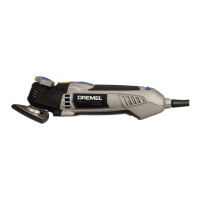
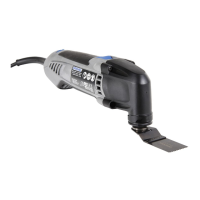
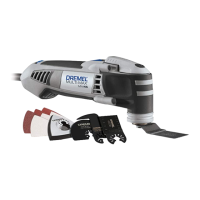
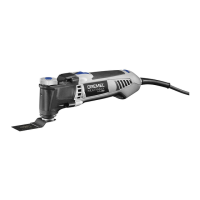
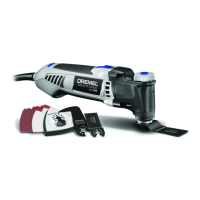

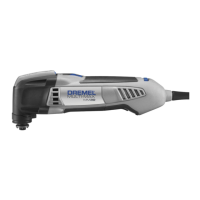
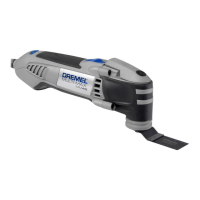
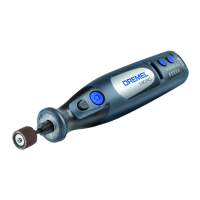
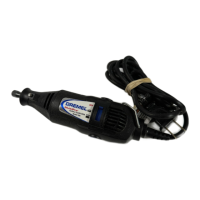
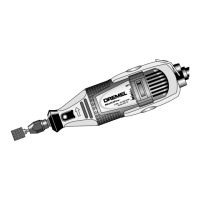
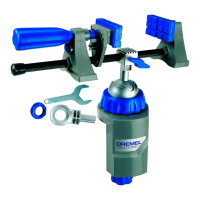
